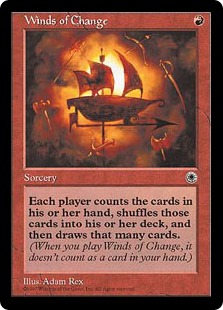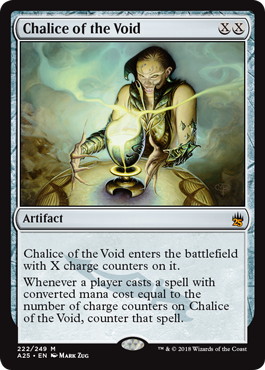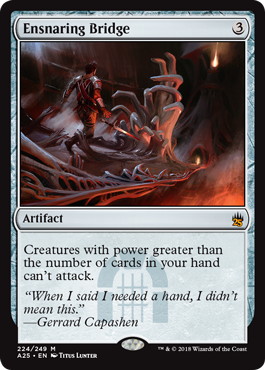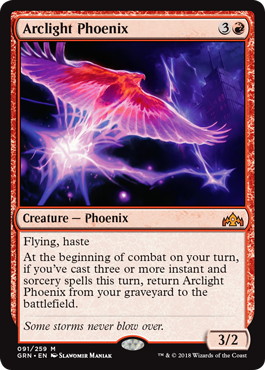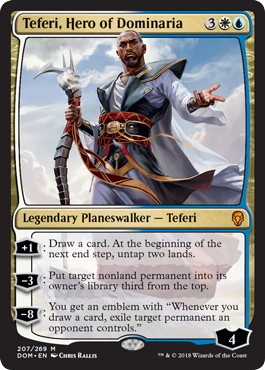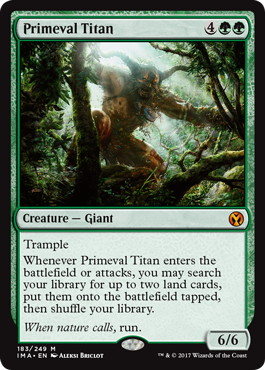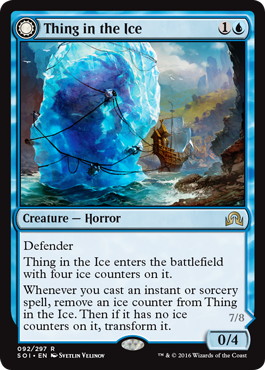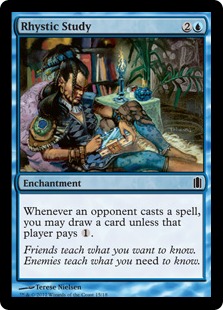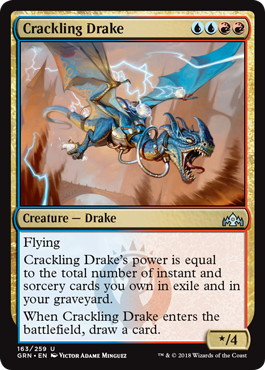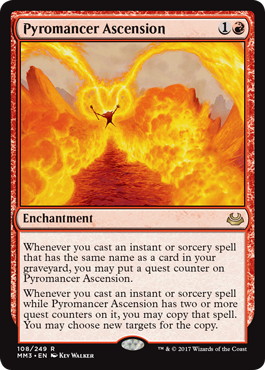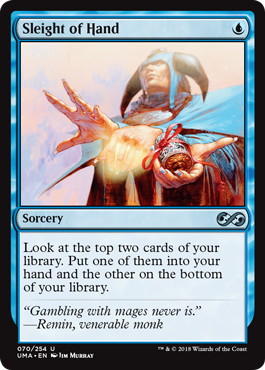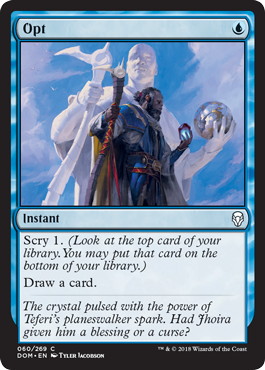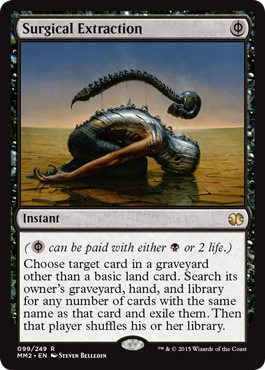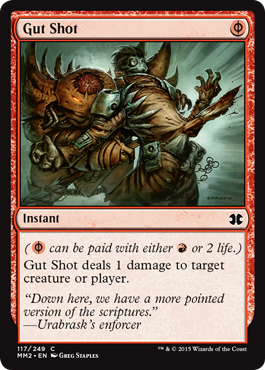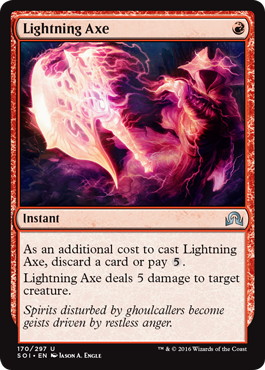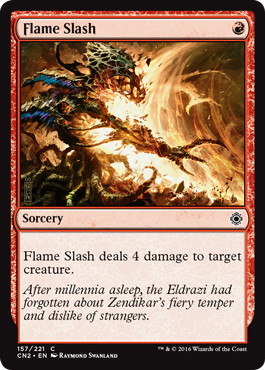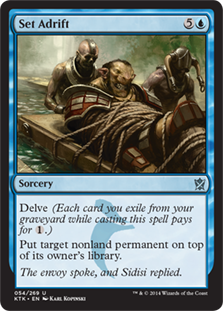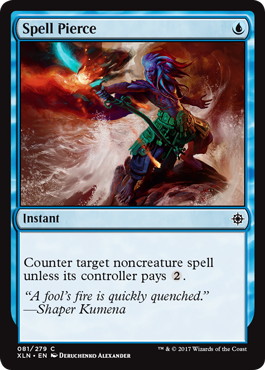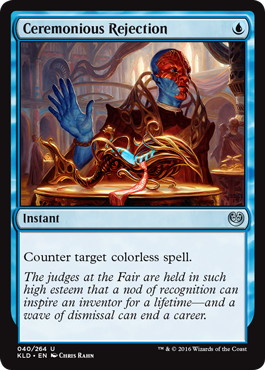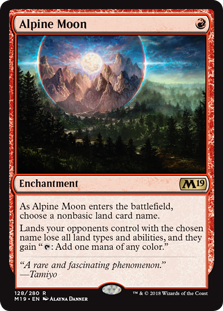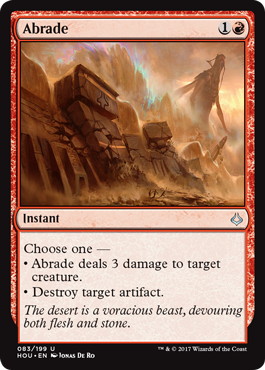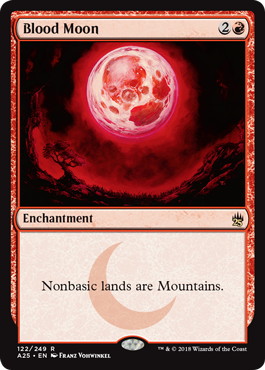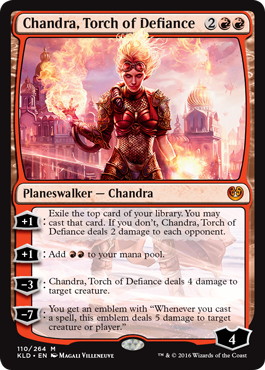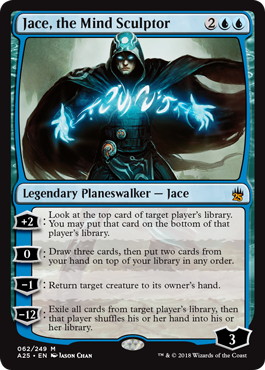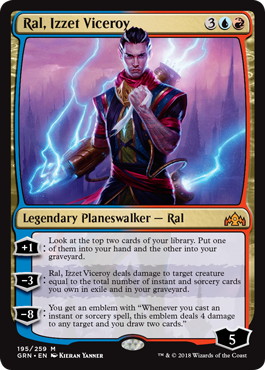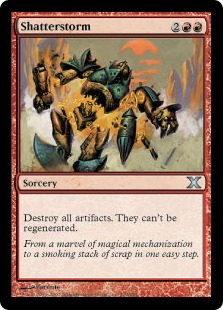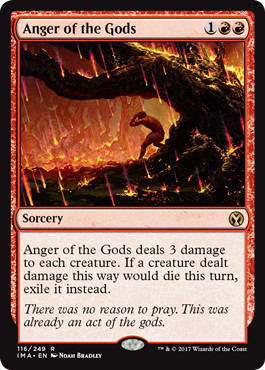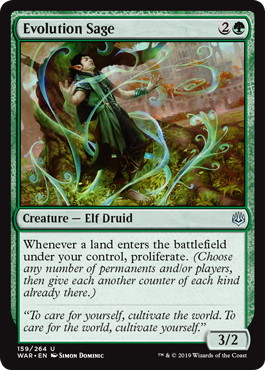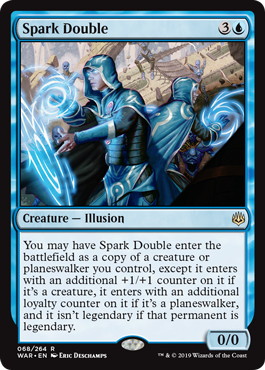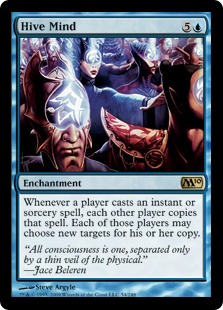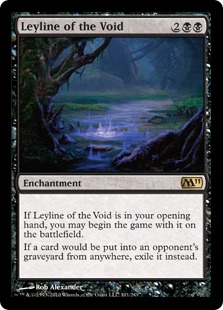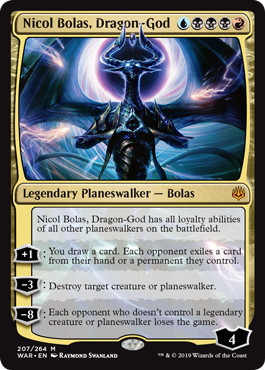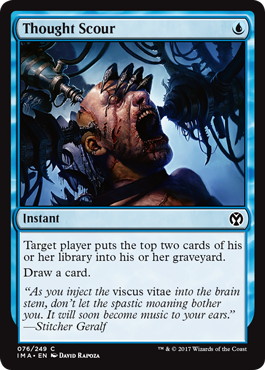Introduction
Hola!
It’s been a while since the last article I wrote about Izzet Phoenix, but luckily this time my experience with the deck went much better than the one I had at GP Liverpool 2018.
I made my second Top8 at the Pro Tour/Mythic Championship!
TOP8 of the #MythicchampionshipII !!!!!!!!!!!!!!!!! AAAAAAAAAAAAAAAAAAAAAAAAAA
— Javier Domínguez "Thalai" (@JavierDmagic) 2019年4月27日
Pre-Tournament
The Mythic Championship II was designed to be a different tournament compared to last ones we’ve had for a few reasons. First of all, the constructed portion was Modern. Love it or hate it, Modern tournaments are different than Standard ones, and they also should be approached differently in testing. We were also given the chance to play in the tournament with the new “London Mulligan” rule (translated as: When you mulligan for the Nth time, you draw seven cards, then put N cards on the bottom of your library in any order).
In addition to that, past the first constructed round (Round 4), we would be playing knowing most of the content of our opponents decklists. More precisely, we had the exact numbers on the maindeck but we were provided sideboard list without specifying the numbers on each slot, in a way that we could know if our opponent was playing 《Leyline of the Void》 but we couldn’t know the exact number.
Those differences put us away a typical MC, but if that wasn’t enough, the Limited portion would be played with War of the Spark on its prerelease weekend, which effectively turned the event into Pro Tour Prerelease. As someone that usually needs a while to figure out Limited formats, the whole event wasn’t looking particularly well for me.
Well, I was wrong.
Before I even had an idea about how to prepare the tournament, one thing was clear to me: I would partner with Andrea Mengucci, the Mythic Invitational winner. Andrea and I have not only become pretty close at this point, but we also have work dynamics that I think just makes us both be effectively better players. I just don’t see myself preparing events without him in the near future.
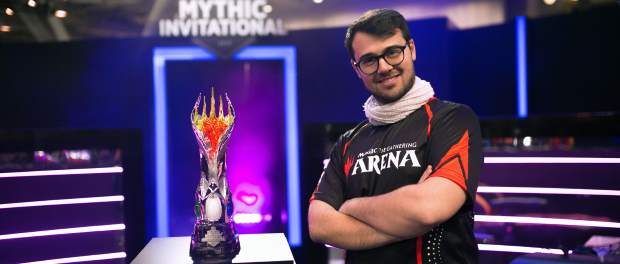
Andrea Mengucci (Image Copyright : Wizards of the Coast)
Limited Portion
Our first challenge was figuring out how to prepare Limited, a challenge every other team would have to go through as well. Let me say first that I’m not a big fan of drafting within teams. I’m usually against it. I think that if a team gets to a point where everyone has a similar approach to a Limited format, drafting in a table where everyone drafts the same way will create an environment where enough cards just don’t get there for certain archetypes, making testing those archetypes harder.
This time, however, drafting in a house in-team wasn’t exactly an option since War of the Spark couldn’t be drafted online before the tournament. Therefore, we needed 8 people to draft. To test Limited for the tournament we teamed with Marcio Carvalho, Goncalo Pinto, Bernardo Santos, Bernardo Torres, Joao Andrade and Jose Cabezas.
#Valenciatesting limited meeting is done.This has been a very humbling experience. Ill use a @Mengu09 picture. @KbolMagic and @JavierDmagic are in a different league, i knew @Bernardocssa was very good. joao_andrade and @P22Bernas surprised me and @u_mad_bro_MTGO eats healthy❤️ pic.twitter.com/Ut0YZI6mnQ
— Jose Cabezas (@JoseCabezas_pok) 2019年4月23日
I am really happy about how the team worked, since I think we really put a lot of effort even the whole stay felt like just a group of friends together. After a few drafts being consistently destroyed by Marcio and Joao, we felt relatively prepared for the Limited portion. And then is when the real struggle began.
Modern Portion
I can be found in two very distinguished modes before an important constructed tournament: either I know which deck I will play or I don’t. In other words, if I’m not almost locked in advance into a deck I know very well (Sultai Midrange at last MC) I will likely be struggling a lot on which deck to play, because I think deck positioning is extremely important in nowadays Magic.
Picking a deck in Modern is also always a challenge, because when a Modern matchup is bad, it’s often really bad. This puts you on a spot where if you pick the wrong deck for a metagame, you might be toasted even before the start of round 1. Since I knew it would be a complicated call, I set myself a deadline on Tuesday to decide which archetype I would play. Wednesday night was the official deadline, so I gave myself one day to work on the details of my constructed deck.
Since we spent a lot of time and effort to prepare the Mythic Invitational, we felt slightly off on Modern. Since the beginning of the testing, Andrea was almost locked on playing Whir Prison and I was almost locked on not playing it unless he specifically told me I must play that deck because it was too good. That did NOT happen.
After a few days playing a bunch of Magic Online Leagues, my frontrunners were: Tron, Humans, Phoenix, Azorius and Amulet Titan, which is still a lot of decks. I didn’t play Amulet Titan because I felt the power level wasn’t there to make up the fact that I was consistently missing equity by not playing the deck well enough. I’m pretty sure it’s the deck I played the most during the weeks prior to the MC. I didn’t play Azorius because I felt like many things could go wrong, from me not playing very well to the deck just losing too many points against opponents that would play perfectly around tools like 《Cryptic Command》. Besides, Mengu is also a solid voice against me playing Control in any given situation.
Tron was actually relatively close, since I think it’s the deck that benefits the most with the London mulligan rule. My concern with Tron was that I was expecting it to be the most popular deck but also the most targeted deck in terms of hate and deck selection. I didn’t want to play Tron in a field that could potentially have too many decks like Amulet or 《Ad Nauseam》 or have a bunch of cards like 《Alpine Moon》. I signed off Tron the day where Marcio beat me a million times with Izzet Phoenix post-board.
That left me with Humans and Phoenix as my final options. Phoenix was the deck I played the most from these 2, but Humans seemed to be extremely well positioned prior to the tournament, with a lot of players overloarding with cards like 《Surgical Extraction》. The biggest hit for Phoenix was when Marcio, after beating me with it in a million different ways moved to Humans. Shortly after, Mengucci also dropped Prison and out of nowhere I was in a Humans team.
As you might now, I played Izzet Phoenix to reach my second MC Top8.
Staying away from the Team deck really didn’t feel right. I can firmly say a big chunk of my success has a direct relation with the people I’ve been working with, as I consider the exchange of information and knowledge an extremely important asset going into a tournament. Playing a different deck than the rest of my teammates was a tough mental barrier to break for me.
At the end, I concluded that Izzet Phoenix was the best deck for me to play on that tournament. A part of this is how I see Modern compared to Standard. I think the technical Modern gameplay is more complex and therefore I value a lot the experience of certain situations. You can lose a match because you miss some kind of obscure interaction or just don’t know an atypical situation well. In Standard, on the other hand, what I value the most is having a clear plan of what matters the most against the different macro-archetypes, since small details tend to matter less than how good or bad your deck overall.
Tuesday night I decided I would play Phoenix, and I scheduled the whole Wednesday daytime to study as much as I could about the archetype. I think once you know the basics of a deck, learning from other players will often provide much more value than just playing additional games.
Enter Izzet Phoenix
I spent some hours trying to dig every single article, forum post, group and sideboard guide I found on the internet. I can also tell you that means a lot of different browser tabs.
One interesting conclusion I perceived was how little of a consensus there was between different players that clearly knew their decks very well, which speaks about the depth of the strategy.
To have a better idea of what to think about most cards, I went through a few articles/sideboard guides from Phoenix experts like Tariq Patel, the “MTGO trophy leader” Naisirc or Jenara19. I found all this information very useful to make my final calls.
After that review work, this was my final list:
- Javier Dominguez
- – Izzet Phoenix
- Mythic Championship II
- (Top 8)
2 《Mountain》
3 《Steam Vents》
4 《Scalding Tarn》
1 《Flooded Strand》
1 《Polluted Delta》
4 《Spirebluff Canal》
-Land (18)- 4 《Thing in the Ice》
4 《Arclight Phoenix》
1 《Crackling Drake》
-Creature (9)-
4 《Lightning Bolt》
4 《Serum Visions》
4 《Sleight of Hand》
4 《Thought Scour》
2 《Surgical Extraction》
1 《Flame Slash》
1 《Gut Shot》
1 《Lightning Axe》
1 《Spell Pierce》
4 《Manamorphose》
1 《Set Adrift》
2 《Pyromancer Ascension》
-Spell (33)-
2 《Abrade》
2 《Ravenous Trap》
2 《Blood Moon》
1 《Crackling Drake》
1 《Flame Slash》
1 《Spell Pierce》
1 《Anger of the Gods》
1 《Shatterstorm》
1 《Alpine Moon》
1 《Chandra, Torch of Defiance》
-Sideboard (15)-
Card Choices: Mainboard
Manabase
The manabase is relatively stock. The only point where I had doubts was 《Sulfur Falls》. I really wanted to have another dual land I could play untapped in the mid-early game. I found myself losing some games because of 《Spirebluff Canal》 coming into play tapped in the mid-game which was very annoying. In the end, I concluded that having 1-land hands with 《Sulfur Falls》 is just too much of a drawback.
Don’t forget to fetch 《Island》 if you are on the 《Blood Moon》 plan.
Threats
Past the required 8 overpowered threats, I found 2 《Crackling Drake》 s to be the most common number. While I do agree Drake is an excellent B/C plan on this deck, I consistently found the card to be much better in post-sideboard games, while in game 1, specially on the draw, it was just too slow against non-control decks. That’s why instead of running 2 maindeck, I decided to move one to the sideboard and just move one sideboard card to the maindeck, to keep the same amount of slots in the deck.
《Pyromancer Ascension》 is the reason why I think the deck is on contention for the best Modern deck. It just really adds a combo axis in a deck that otherwise is relatively aggressive, making it naturally resilient against creature removal tools that would be enough to stop the deck otherwise. The biggest drawbacks Ascensions have are graveyard hate and diminishing returns. My defense against those two issues was just playing two copies, reducing drastically the chance of having two of them in a spot where I just want to draw 1. If the metagame shifts into being more creature-hostile, I would like a 3rd 《Pyromancer Ascension》 in the deck.
《Sleight of Hand》 vs 《Opt》
Well, I might not have a good answer here. 《Sleight of Hand》 is also commonly known as “training wheels” when it comes down to its role in Izzet Phoenix. I will not disagree. However, training wheels don’t let you fall of the ground when you are kid, and I think Phoenix games are already complicated enough that I find these training wheels quite useful overall.
There are two important spots where 《Opt》 outclasses 《Sleight of Hand》 . One is when you have a counterspell and you want to keep your options open to cast that counterspell. The other one is when you want to flip 《Thing in the Ice》 as an instant.
I found both of those spots to be relatively uncommon during my testing. After the feedback from different people I came to the conclusion that it’s because I play the deck in a very aggressive way. I rarely want to stay on defense. I seldom wait to my opponent’s turn if I have an Awaken Horror ready to attack because I often just want to be the aggressor. Of course, there are some situations where you value the instant speed, but I think those don’t happen often enough, and even when they do, the deck already plays plenty of instants.
The key to 《Sleight of Hand》 lies on every other single situation including those turns where we go off with 《Pyromancer Ascension》. That is, every time you would cast an 《Opt》 in your main phase, 《Sleight of Hand》 would be, by definition, stronger, since it gives you more information. Now that’s a situation that happens very often and it adds a little bit of value every time it happens. It is not clear at all when Sleight is better than 《Opt》 unless you are specifically thinking a lot about it when you resolve the spell, but if you have a situation where you would like the Sleight to be and 《Opt》 it is going to be pretty obvious, and because of that it’s also easy to notice and remember. I think that’s the bigger reason for most people to prefer 《Opt》. It’s easy to remember a game that you lost because of not having 《Opt》, but it just doesn’t go the other way around.
The most common example situation where Sleight outclasses 《Opt》 happens when you are looking for a specific card and then the Scry provides a medium card, like another cantrip that we really don’t want to keep on top. In this case, you have to choose one of them; 1) put it on top and pay extra mana to play it. 2) put it on bottom and hope the second card is good. If you have a Sleight here, you can just grab the better one with full of information. For that reason, 《Sleight of Hand》 increases the consistency of the deck.
Overall, I do invite you go reconsider the “《Opt》 is just obviously better than 《Sleight of Hand》 ” approach.
Here’s my Playset of Opts for Izzet Phoenix #MythicchampionshipII pic.twitter.com/uZfwvMF2Fu
— Javier Domínguez "Thalai" (@JavierDmagic) 2019年4月27日
Flex slots
Phyrexian Mana Spells (2 《Surgical Extraction》, 1 《Gut Shot》)
《Surgical Extraction》 and 《Gut Shot》 are a necessary evil to have those explosive starts with 《Thing in the Ice》 or 《Arclight Phoenix》. My issue with these Phyrexian Mana spells was the fact that they were almost dead in certain matchups without any text other than being a free spell. I played 3 《Surgical Extraction》 on the maindeck for a while, but in the end I decided to cut the third copy, since I found that drawing 2 in the wrong matchup was just too bad for me. I also didn’t want to go below two because I wanted to respect Dredge and the mirror match.
《Gut Shot》 filled that 3rd Phyrexian spell slot while being a decent hedge against Humans, an archetype I was willing to respect on my deckbuliding. 《Gut Shot》 being able to kill a 《Thing in the Ice》 in combination with 《Lightning Bolt》 was the final reason why I decided to maindeck it.
Extra Removal Spells (1 《Lightning Axe》, 1 《Flame Slash》)
《Lightning Axe》 and 《Flame Slash》 were my removals 5 and 6. I think splitting is better even though it doesn’t really interact well with 《Pyromancer Ascension》. 《Lightning Axe》 deals with 《Gurmag Angler》 and 《Flame Slash》 is the best thing we can do against 《Thing in the Ice》 while being overall an excellent removal in games where you take the controlling approach.
Flexible Answer (1 《Set Adrift》)
《Set Adrift》 is my flexible answer of choice over 《Echoing Truth》. It doesn’t translate into card disadvantage and makes it easier to play multiple spells on the same turn to trigger 《Arclight Phoenix》. Permanents with the same name like 《Ensnaring Bridge》 or 《Death’s Shadow》 s are perfect targets to bounce in multiples but overall I liked 《Set Adrift》 better. In a way, it’s somewhat similar to the Sleight vs 《Opt》 thing, where 《Set Adrift》 offers more consistency, this time by being able to play a better attrition game.
The spot where I think 《Echoing Truth》 really outclasses 《Set Adrift》 is specifically against 《Rest in Peace》 /《Leyline of the Void》, where 《Set Adrift》 is really bad. If we expect a metagame heavy on those cards, 《Crackling Drake》 would actually solve that problem in a more robust way.
Interaction (1 《Spell Pierce》)
《Spell Pierce》 is the maindeck card I replaced the second 《Crackling Drake》 with to keep the same amount of slots. In addition to the occasional 《Cathartic Reunion》 we can counter, the strongest reason why I added this card into the maindeck is because I found myself often seeing a lot of cards in a critical turn but having absolutely zero maindeck cards to interact with my opponent’s plan. Cards like 《Ugin, the Spirit Dragon》 or 《Ad Nauseam》 made me feel like that, so I wanted to include in the deck something I could potentially cantrip into.
I rarely choose to counter instead of developing unless I think I will clearly lose if I don’t interact early, and that’s why I don’t feel that much tension between cantrips and 《Spell Pierce》. It’s cool to have the option to cut a spell on the first turns, but the main goal of this slot is to have an answer to the most powerful threats our opponents might present later in the game.
As usual, I found when to do nothing the hardest part of the deck. All the spots are different, but finding those where for some reason you just don’t want to jam a turn 2 《Thing in the Ice》 could be the difference between a fine tournament and a Top8.
Card Choices: Sideboard
1 《Crackling Drake》, 1 《Spell Pierce》
These two complete the maindeck one-ofs. I wouldn’t blame anyone for playing a 3rd 《Crackling Drake》 here if metagame has a lot of graveyard hate.
1 《Flame Slash》
《Flame Slash》 is here to deal with 《Thing in the Ice》. 《Rending Volley》 was fighting for this slot but at the end I decided to respect Hardened Scales.
2 《Ceremonious Rejection》, 1 《Alpine Moon》
《Alpine Moon》 is the single best card we can have against Tron, but I ultimately decided to respect both Hardened Scales and Eldrazi/《Chalice of the Void》 decks with this split. I don’t think the gap between this two is particularly big, but if you expect a lot of Tron and almost no other colorless deck, I would go with more 《Alpine Moon》.
2 《Abrade》
《Abrade》 is probably the worst card in the sideboard but is also a very useful one, and early on I decided I would play at least 2. It’s rarely a great card but it comes in in so many matchups that it often lets you sideboard out dead cards like those 《Surgical Extraction》 s.
2 《Blood Moon》
Not exactly the funniest card ever. I think 《Blood Moon》 is extremely good in this deck because Phoenix’s aggressive nature makes 《Blood Moon》 good in matchups where it wouldn’t in a defensive deck. We don’t need this to be game over to sideboard it in, it is enough as a card that buys us some time.
2 《Ravenous Trap》
I found 《Ravenous Trap》 to be the best anti-Dredge card, as it’s really hard for them to play around.
1 《Chandra, Torch of Defiance》
I don’t really like Planeswalkers in this deck, since they often underperformed to me compared to 《Crackling Drake》. What Chandra did best was being easier to sideboard in against aggressive matchups, where she’s just be a worse removal, but still a removal. I think I would even play the second Chandra over the first 《Jace, the Mind Sculptor》, which was surprisingly mediocre here. 《Ral, Izzet Viceroy》 was actually decent most times I cast it, but 5 mana is in my opinion just too much for this deck.
1 《Shatterstorm》
Mengucci talked me into playing this card after destroying me with Whir Prison too many times. The idea is that no single card in the format will give you as many win % as this one does if you get paired against Whir Prison.
Skillfully, I got paired against Whir once on the MC and I did indeed draw THE 《Shatterstorm》.
1 《Anger of the Gods》
I don’t think this card is very good by itself, but I wanted to have a card that could provide a reinforcement against both Humans and Dredge at the same time, and it’s not exactly easy to find cards that are good against both decks. It’s also very hard for them to play around and 《Meddling Mage》 sometimes has to name it as long as they know you have it on your list.
The Tournament
Day 1
My tournament started with an 《Evolution Sage》 as a first pick in the first draft and a few other green cards but I eventually settled into a medium Red/Black deck that felt very open to me.
After losing round 1 to a well timed Turn 3 《Kiora, Behemoth Beckoner》 + Turn 4 《Nissa, Who Shakes the World》 + Turn 5 《Spark Double》 I ended the draft 1-2 thinking (incorrectly) that the tournament would not be very kind to me.
The constructed portion started against Amulet Titan where I won game 1, lost game 2 to a Turn 2 kill and then proceeded to pull one of the most dramatics comebacks I remember that ended with me surviving a 《Hive Mind》 trigger only to draw my 1-outer 《Blood Moon》 to steal the win.
After that, cards really felt my way and I ended day one 6-2 after winning my last constructed match against an interesting prison deck with maindeck 《Chalice of the Void》, 《Ensnaring Bridge》 and 《Leyline of the Void》. Let’s say I didn’t feel lucky once I saw his decklist.
Bounced back like a (UR) Phoenix into a decent 6-2 day. Seeing how it started, Modern went well. More tomorrow! #MythicChampionshipII pic.twitter.com/TdcomZogU6
— Javier Domínguez "Thalai" (@JavierDmagic) 2019年4月26日
Day 2
Day 2 draft kicked off things with a weak 《Lazotep Reaver》 and getting fed a lot of blue cards until I opened 《Nicol Bolas, Dragon-God》 on pack 2 that dictated the rest of my draft. Deep into blue with some black and splashing red I almost picked a relatively late 《Chandra, Fire Artisan》 but at the end I decided that my mana wouldn’t allow me to play it. Luck was on my side once again as some hours later I managed to destroy that Chandra with my own Nicol-Bolas.
After two matches where I won all the games with Nicol-Bolas, I beat Petr Sochurek in the finals, moving to the last portion of constructed with a decent 9-2.
My draft decks from the #MythicChampionshipII 1-2 and 3-0 respectively. Full Bolas flavor in both drafts! pic.twitter.com/eLVYipMvHY
— Javier Domínguez "Thalai" (@JavierDmagic) 2019年4月30日
A few rounds later I played my win and in against MPL competitor Seth Manfield, who is always a tough opponent, on Dredge. Not exactly the best situation for me but sometimes you have to beat the best to get there.
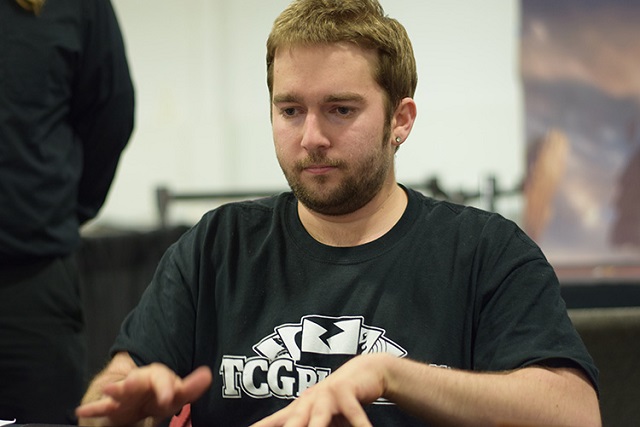
Seth Manfield (Image Copyright : Wizards of the Coast)
I had made my second Top8! I felt not only very lucky but also very grateful about the support I received from my friends. Sharing the venue with the Grand Prix offered me the opportunity to live that moment with people I don’t get to see that often at the Mythic Championships.
Day 3
On Sunday I played my quarterfinals matchup against the eventual champion Eli Loveman who happened to be a very friendly opponent and clearly a very deserving champion.

Eli Loveman (Image Copyright : Wizards of the Coast)
I left the venue with a smile. Not so long ago, reaching the Top8 of a Pro Tour felt like an almost inaccessible dream, and there I was enjoying the feeling of reaching that feat once again. That and thinking of a massive Chinese food feast, of course.
Sideboard Guide – Matchup Guide
If you made it to this point reading the whole thing… wow! Thanks!
If you didn’t: Hello!
Here’s how I sideboarded against the most popular matchups and small tips on how to play against them. Yes, I sideboard 《Crackling Drake》 in almost every matchup.
Izzet Phoenix:
《Thing in the Ice》 is likely the most important thing, but 《Pyromancer Ascension》 is also very good because how hard it is to interact with.

Against Izzet Phoenix
Tron:
Game 1 I like 《Thought Scour》ing them turn 1 even if I don’t have the 《Surgical Extraction》 yet as long as I don’t have a 《Pyromancer Ascension》 or a Phoenix significantly increases the clock. Good luck milling their Urza lands!

Against Tron
Humans:
Be careful about attacking with Awaken Horror against 《Aether Vial》 on 2, since 《Phantasmal Image》 can kill us on the swing back.

Against Humans
Dredge:

Against Dredge
Golgari – Jund:

Against Golgari – Jund
Death’s Shadow:
Against Shadow I choose being on the draw whenever I can. Be also aware that they often have inevitability, so if you don’t really have a way to win a long game I like going for the kill even if it loses to a 《Stubborn Denial》.
Post sideboard I often found 《Arclight Phoenix》 being a 3R 3/2 flying haste often very useful, so keep it in mind before discarding them to a 《Faithless Looting》.

Against Death’s Shadow
Amulet Titan:

Against Amulet Titan
Burn:
《Blood Moon》 comes in here as a disruptive tool against their White cards, which become completely uncastable.

Against Burn
Hardened Scales:

Against Hardened Scales
Frenzy Affinity:

Against Frenzy Affinity
Ad Nauseam:
I always 《Thought Scour》 them unless I have a 《Pyromancer Ascension》. Not only because 《Surgical Extraction》 but because you can also randomly hit win conditions.

Against Ad Nauseam
Azorius Control:

Against Azorius Control
Titanshift:
This is another matchup where we 《Thought Scour》 our opponent.

Against Titanshift
Mardu Pyromancer:

Against Mardu Pyromancer
Whir Prison:
This matchup is actually very tricky. There are a lot of different play lines that can make a huge difference, like Scouring our opponent to delay 《Academy Ruins》. If you are on the play with a cantrip heavy hand against Whir, I found it better to just play double cantrip on turn 2 instead of something like 《Pyromancer Ascension》 or 《Thing in the Ice》, since that’s our best defense against 《Chalice of the Void》.

Against Whir Prison
Thanks for reading!



